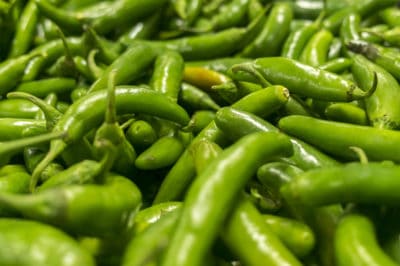Planting
In USDA zones 10 and above, grow peppers all year long as perennial plants. They can be started at any time of the year by sowing seed directly in the ground or in a pot.
Plant pepper seeds indoors 8-12 weeks before the last frost date in your region. Keep the seed trays at temperatures between 65-75°F (18-23°C). They will sprout within 5 days. Use a standard potting mix or make your own by combining the following ingredients in three equal parts.
- Peat or Coconut Coir
- Perlite or Vermiculite
- Screened Compost
Keep the seeds moist but avoid over-watering. Soggy soil can lead to dampening off, a condition in which seedlings fall over and die from a rot in the stem at the soil surface. The best way to water seedlings is from the bottom. Pour water into the bottom of the trays and allow it to wick up through the soil.
Transplanting
A few weeks after the last frost date when nighttime temperatures are safely above 60°F (15°C), you can begin to acclimate your plants for transplant.
Prepare an outdoor planting bed with well-draining soil. Amend it with 6-8 inches of rich compost and some oyster shell for calcium. The bed should be in full sun, though having some taller companions to provide a bit of dappled shade doesn’t hurt.
Acclimate your pepper plants to the outdoors by bringing them outside each day. Increase the amount of time they spend outdoors and their exposure to direct light, wind, and temperature fluctuations. This process may take a week, and plants should only be planted outside once they show no signs of stress after being outdoors for 24 hours.
Care and Harvest
Your plants shouldn’t need any additional feeding until they begin to put fruit on. When the fruits are small, apply some compost tea as a liquid fertilizer to encourage healthy pepper growth.
Harvest serrano peppers when they reach 3-4 inches long and round out. Typically they are harvested green, but there is no reason that you can’t leave them on the plant until they turn red. Hot peppers can be preserved a number of ways. They can be frozen, dried, canned, or pickled.
